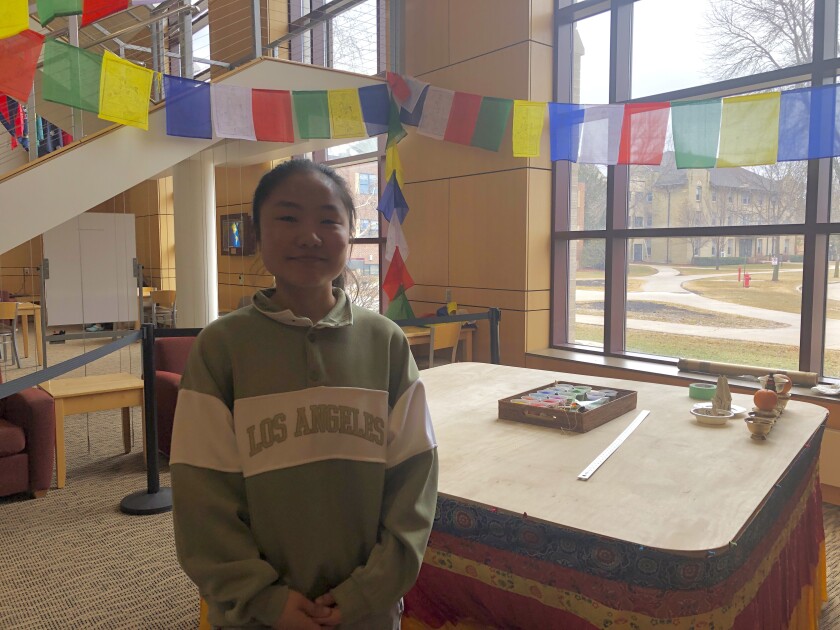CROOKSTON, Minn. ŌĆö An event at the University of Minnesota Crookston this week serves as a reminder that nothing lasts forever.
On Tuesday, April 11, Wongdue Sangbo Gurung, a Buddhist monk from Nepal, started creating a mandala ŌĆö a geometric figure depicting Buddhist symbolism ŌĆö with sand. Over the next eight days, Wongdue Sangbo Gurung will spend hours completing the ritualistic practice of layering colorful sand in a circular geometric pattern.
ADVERTISEMENT
On April 20, it will be destroyed.
The destruction of the mandala after hours of work are poured into it goes back to fundamental Buddhist beliefs about impermanence, says Tseten Gurung, Wongdue Sangbo GurungŌĆÖs niece and a current UMC student.
ŌĆ£With the sand mandala, what it is implying is that, even if itŌĆÖs so beautiful, and takes so much time, all of those hours bending your back, at some point, everything is impermanent,ŌĆØ she said. ŌĆ£Everything does have to come to an end.ŌĆØ

The dismantling of a completed sand mandala is a part of the ritual. When a mandala is completed, the monks that made it dismantle the mandala and release the sand into running water to spread the blessings of the mandala. The sand from the mandala at UMC will be released into the Red Lake River next week.
Tseten Gurung, who grew up in Kathmandu, Nepal, is the fifth from her family to attend UMC. The first was her older sister, and while she was in school 10 years ago, Wongdue Sangbo Gurung came to UMC and created a sand mandala as well.
This time, he is making this specific mandala because of the uncertainty that has come with the last two years of the COVID-19 pandemic.
ŌĆ£The mandala actually symbolizes peace, so this time it was particularly because of COVID,ŌĆØ she said. ŌĆ£Everything is so uncertain and so the mandala heŌĆÖs making is specifically for the situation.ŌĆØ
ADVERTISEMENT
Rae French, international programs coordinator at UMC, said Tseten Gurung came up with the idea to bring her uncle to campus. French thought the idea was fitting for the times.
ŌĆ£We are in a world of chaos. There are just so many things happening, and this really is about peace, love, understanding, meditation and quiet,ŌĆØ said French. ŌĆ£It just kind of brings us back to the good things of life, not all of this noise thatŌĆÖs happening.ŌĆØ
Before starting on the mandala, Wongdue Sangbo Gurung adorned the space with Tibetan prayer flags and an image depicting a Buddhist deity or god, and read prayers out loud. Over the next eight days, he will sketch the geometric measurements for the mandala and arrange brightly colored sand to create intricate geometric patterns and symbolic imagery. The dense sand, made of crushed stone and dyed with natural ingredients, is placed using tubes, funnels and scrapers.

The closing ceremony for the mandala will be at 4 p.m. on Wednesday, April 20. Wongdue Sangbo Gurung will destroy the mandala, collect the sand used to make it and release the sand into the river.
With the mandala focused on the COVID-19 pandemic, Tseten Gurung says it is a reminder that it too will not last forever.
ŌĆ£Nothing will stay. ItŌĆÖs a temporary thing, and every situation has to come to an end, even if it's a bad situation,ŌĆØ she said.
As Wongdue Sangbo Gurung completes the sand mandala, it can be viewed in person in the International Lounge in the Sargeant Student Center or online at until April 20.













